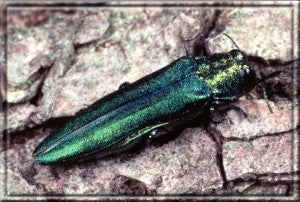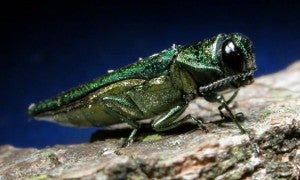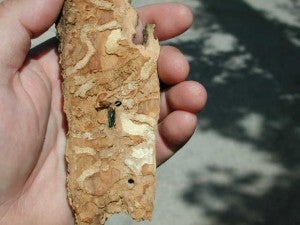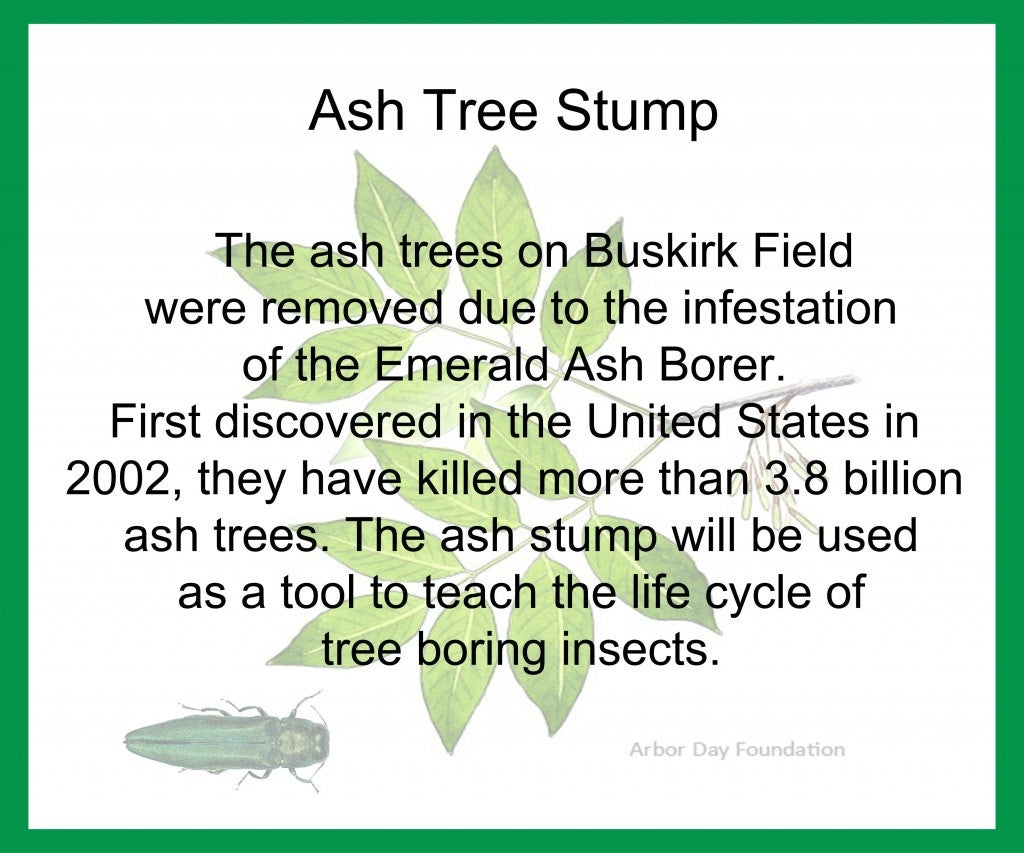References: National Arbor Day Foundation https://www.arborday.org/
Signs Designed by Amanda Parsons, Natural Resources and Recreation Management student.
 WHAT IS EAB?
WHAT IS EAB?
The Adult Emerald Ash Borer (EAB) Beetle
This invasive insect is bright, metallic green, about 1/2″ long with a flattened back. It has purple abdominal segments under its wing covers. The EAB can fit on the head of a penny, and is hard to spot in the wild.
The EAB Larva
It’s the larva that does all the harm to ash trees. Larvae tunnel under the bark and disrupt the tree’s systems that transport food and water, eventually starving and killing it.
 Where Is The EAB?
Where Is The EAB?
Since it was first detected in North America, the beetle has been found in Connecticut, Illinois, Indiana, Iowa, Kansas, Kentucky, Maryland, Massachusetts, Michigan, Minnesota, Missouri, New Hampshire, New York, Ohio, Pennsylvania, Tennessee, Virginia, West Virginia, and Wisconsin. More states are at risk.
The Emerald Ash Borer (EAB) beetle has killed tens of millions of trees, from forests to neighborhoods. Here’s how you can help protect our trees:
 How Did It Get Here?
How Did It Get Here?
The EAB probably arrived inside wood packing material from Asia. Since its discovery in southeastern Michigan in 2002, the EAB has killed tens of millions of ash trees.
How Does It Spread?
EAB adults are strong flyers, but most of them only fly short distances (about 1/2 mile). So they don’t spread far on their own. Most new infestations are caused by people unknowingly taking infested ash to an uninfested area.
Where Can The Beetle Hide?
Infested ash materials can include any part of an ash tree including logs, stumps, branches of almost any size, composted or uncomposted chips, nursery stock and especially firewood.
What Is The Cost?
EAB infestations have already cost municipalities, property owners, and industries millions of dollars. If we don’t stop the beetle, the economic costs will be unimaginable and our yards, woods and neighborhoods may never be the same again.
Download a fact sheet on identifying ash trees.
References:



